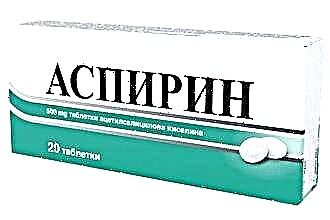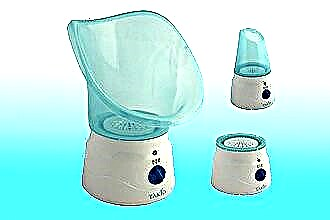Often people do not attach importance to the swelling of the legs that occurs at the end of the day. But this unpleasant symptom does not go away on its own, but progresses, becoming a herald of the resulting heart failure.

What causes edema?
Swelling occurs due to the large accumulation of fluid in the body. They are often a concomitant symptom of heart disease. Swelling of the legs is the result of malfunctioning of the right ventricle of the heart muscle. With the progression of the disease, they move to other parts of the body and organs. At the same time, the legs swell at the same time.
Treatment of leg edema in heart failure begins as early as possible. Over time, they cause more and more discomfort. If at the beginning the swelling with heart failure decreases after rest or a night's sleep, then in the advanced stage this does not happen. Swelling rises higher - on the knees, hips. The rest of the symptoms that heart failure entails are making themselves felt: increased fatigue, decreased performance, shortness of breath.
Heart disease often becomes severe or chronic. This is due to the slow progression of the disease. In the early stages, people may simply not take edema seriously, linking it to leg fatigue. Therefore, when such signs appear, it is important to consult a specialist in order to start treatment on time.
How does leg edema occur in heart failure? If the heart malfunctions, the pressure in the veins rises. This increases the pressure in the capillaries, which leads to the withdrawal of fluid from them into the tissue. There is a decrease in the amount of blood pumped by the heart. This increases the production of enzymes.
The kidneys retain an excessive amount of sodium ions, then they pass into the blood and intercellular fluid. This leads to pathological processes in the body, as a result of which water is not excreted by the kidneys in sufficient volumes, but accumulates in the body.
Due to the pressure in the veins and capillaries, excess fluid returns to the tissues of the body. In case of insufficiency, the heart cannot work fully, its functions are weakened. When a person spends the whole day on his feet, the possibilities of the heart are exhausted. This is how swelling of the lower extremities appears at the end of the day.

Signs
Often people do not realize that the cause of leg edema is a malfunction in the activity of the heart. Therefore, they do not take any action for a long time, and the disease, meanwhile, progresses. Swelling in the legs with heart failure has characteristic signs that differ from a similar manifestation of kidney or liver diseases:
- In the initial form, the disease covers the lower part of the leg - the foot swells.
- Symmetry of appearance (on both legs).
- The lower limbs become elastic to the touch.
- After pressing with a finger, a slowly disappearing fossa remains.
- Enlargement of the liver is possible.
- The severe form of the disease is accompanied by edema in other parts of the body. New symptoms appear - tachycardia, shortness of breath, pale skin, chronic fatigue.
If swelling of the legs appears, similar to a symptom of heart failure, you should immediately go to the doctor and start treatment. Timely help will save you from dire consequences such as heart attack or stroke.
Treatment
When treating leg edema with medications for heart failure, diuretics are usually prescribed. They remove excess fluid from the tissues of the body, thereby making it possible to relieve the symptom.
Furosemide is the most popular drug in this group. It reduces the preload in a short time, dilating the veins, as well as the pressure in the left ventricle of the heart and in the pulmonary artery. By excreting sodium chloride, it has an antihypertensive effect. The diuretic property of the drug occurs within an hour after taking it, it lasts up to 6 hours. "Furosemide" is used both as monotherapy and in combination treatment, together with blood pressure lowering agents. Contraindicated in pregnant women and during lactation. If a person tries to lose weight with the help of this diuretic, he will face the opposite effect, the edema will only increase its area. It will not be easy to remove them - the same drug will come to the rescue, but with a double dosage, which will have an extremely undesirable effect on the body.
Glycosides (carbohydrate drugs) - help to remove edema, blood stagnation in the legs, restore the blood circulation process. They consist of plant or synthetic components that have a beneficial effect on the work of the heart and blood vessels.
Most often, doctors prescribe to patients "Digoxin", which is part of the group of cardiac glycosides. This remedy is considered the safest of this series, since, in the vast majority of cases, it did not cause side effects. Also "Digoxin" provides a long-term effect. It was created on the basis of the leaves of the medicinal woolly foxglove.
"Strofatin" is another drug of the glycoside group. It is administered intravenously. The remedy acts quickly (after 15 minutes), does not accumulate in the body.
Digitoxin is rarely prescribed. This is due to its ability to accumulate in the body and pose a threat of intoxication.
The drugs have contraindications, so they should be taken only as directed by a specialist.
You can make your own medicine for edema from herbs or vegetables. Many of them are diuretic. Here are some natural remedies for treating leg swelling:
- Brew sivets meadow at the rate of: 1 tablespoon in a glass of water. Take orally, divided into 3 doses.
- Mix 2 tablespoons of chopped horsetail herb, birch leaves and plowed steel root. Pour a liter of boiling water, cook for 10 minutes in an open container. The broth is infused for a couple of hours. Drink 4 times a day for ¼ glass.
- Rowan juice is taken fresh, 50 ml three times a day.
- Mix the parsley root, juniper fruits, fennel, birch leaves in equal proportions - 1 tablespoon each. Pour 0.5 boiling water, let it brew for 3 hours. Divide the resulting broth into 3 prims.
- Mix honey and fresh radish juice 1 tablespoon each. Drink the product 3 times a day.
It is best to remove edema with complex therapy, which includes medical procedures.
It is useful to relieve leg swelling in heart failure with sea salt baths. Every day after a working day, you need to massage the limbs, and pay special attention to the legs, take a contrast shower. Putting cold compresses with herbal decoctions. Experts advise the following: while lying on your back, raise your legs above the level of the heart to facilitate their blood supply. Do this procedure as often as possible, especially if you feel tired.
Therapeutic procedures are effective when the legs swell in case of mild heart failure. The advanced stage of the disease requires constant monitoring and significant correction of the diet.
Diet
This is an important part of complex therapy, since it is impossible to remove puffiness without adhering to a diet. What to do to effectively combat edema? Here are some rules:
- Reduce the amount of water consumed. This includes first courses, juices, milk porridge, and other foods with a high liquid content. Excess water in the body burdens the diseased heart, provoking the formation of edema. The total volume of clean water (together with food) should not exceed one and a half liters.If the specific situation of the patient requires it, the doctor prescribes an even stricter restriction.
- Eat often, but in small portions. The best option is 5-6 times a day. Overeating is unacceptable. The interval between the last meal and sleep should be at least 4 hours. This diet creates conditions for rapid digestion and assimilation of nutrients.
- Minimize salt intake. The ideal option is to completely exclude it from the diet. If desired, you can replace it with a little lemon juice while cooking. Salt has a direct effect on fluid retention in the body. The heart gets weaker and the swelling gets bigger.
- Give up fried, smoked, fatty foods. They also tend to increase puffiness. Cooking food in useful ways - boil in water or steam, bake in the oven without adding oil. This applies to both vegetable and meat dishes.

- Balance your diet. It is necessary to reduce the level of consumed fats, but proteins and carbohydrates must enter the body in sufficient quantities, not lower than the daily norm - 2500 kcal. Regular consumption of foods rich in vitamins, minerals (fresh vegetables, fruits, herbs) will have a beneficial effect on the entire body as a whole.
To make it clearer how to treat puffiness in heart failure by correcting the diet, we will combine an approximate list of useful and harmful foods in one table.
| Can | It is forbidden |
|---|---|
| Lean meat (chicken, beef, veal). | Processed meat products (sausage, sausages, ham), lard, pork, goose meat. |
| Dairy and vegetable soups. | Fatty broths. |
| Lean fish (not salted). | Canned food (meat, fish), salted and smoked fish. |
| Stale or dried bread, crackers. | Fresh pastries (bread, pancakes, pancakes). |
| Boiled eggs. | Fried eggs. |
| Cereals, pasta | Legumes (peas, soybeans, beans) |
| Fermented milk products (cheese, cottage cheese, kefir). | Salted cheeses (feta cheese), cream, sour cream. |
| Vanillin, cinnamon. | Hot spices. |
| Vegetable oil. | Animal fats, margarine. |
| Marshmallow, mousse, jelly, candy. | Chocolate, desserts with fat cream. |
| Fresh fruits and vegetables (just don't overdo it), boiled or baked. | Salted, pickled vegetables, nuts, mushrooms, spinach, radish, radish. |
| Juice, compote, weak tea. | Caffeinated drinks (coffee, cocoa, strong tea), alcohol, lemonade. |
The timing of the diet is determined by the doctor. It is usually recommended to adhere to dietary restrictions during the period of treatment for puffiness, as well as the first time after it (about a month).
Prophylaxis
To avoid the appearance of such an unpleasant symptom, you need to monitor your heart. People whose close relatives suffer from heart disease are at risk. They are encouraged to undergo an examination every six months to identify the disease at an early stage of development. Often, the disease does not give itself out as symptoms, but is detected only by medical diagnostics. It is important to be attentive to your body, not to deprive it of exercise, fresh air, and not to expose it to unnecessary stress.




